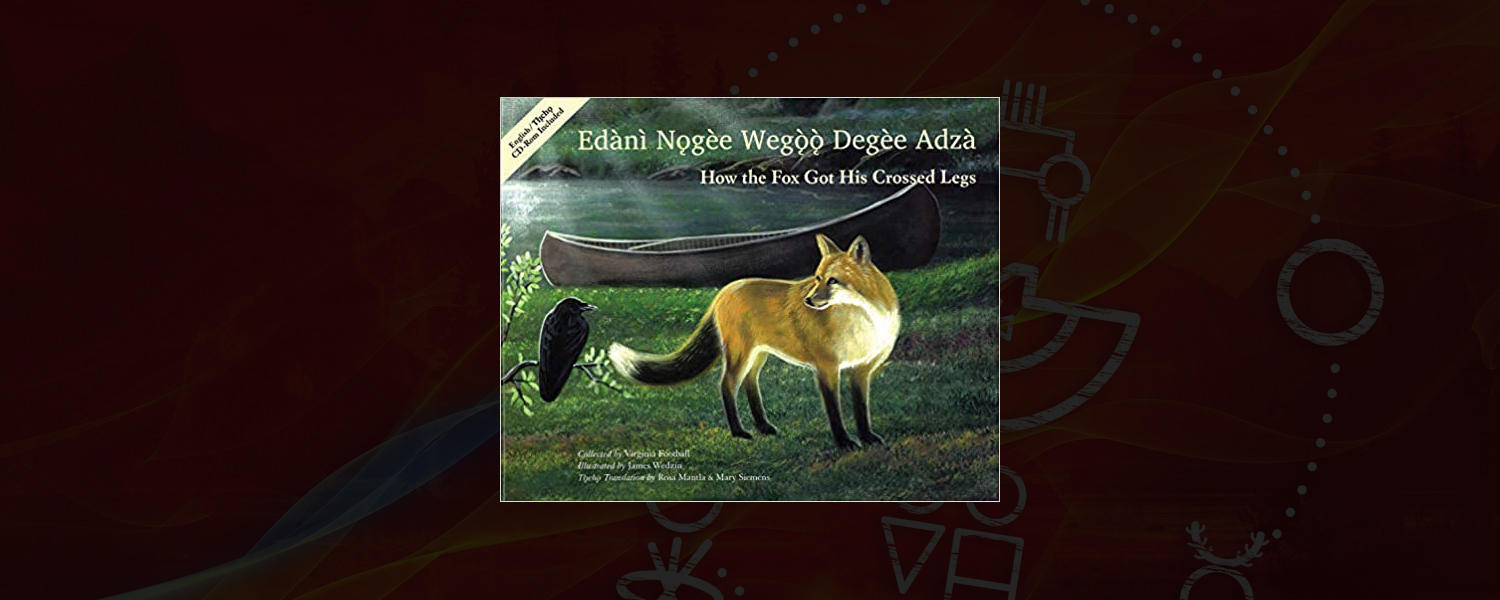
How the Fox Got His Crossed Legs
by Virginia Football, James Wedzin, Rosa Mantla, & Mary Siemens
Description:
Publisher's description (Theytus Books, 2009):
Fox is howling, crying, for he lost his leg to Bear, all the people wanted to help Fox, but didn't know what to do. Raven is called upon to help retrieve his leg. Will Raven succeed in the quest for Fox's leg? Virginia Football and James Wedzin are both Dene.
Creator Biographies (Theytus, 2009):
In 1968 many Dogrib stories were collected by Virginia Football of her people. How the Fox Got Crossed Legs and How Fox Saved the People were both told in Dogrib by her father Sam Football. Virginia then translated them to English. Virginia currently lives in Edmonton, Alberta.
James Wedzin is a Tłįchǫ artist from Behchokö, Northwest Territories. He started making art at age four and soon developed his own style. At age fourteen, James started selling his creations and became a full-time artist. Today, his work can be found in many galleries and private collections. He is well known in Canada for his depictions of northern landscapes, animals and the northern lights.
Resource format: Picturebook
Age recommendation: Kindergarten - Grade 6
Keywords: land, wildlife, nature, animals, tradition, culture, Dogrib language, language, glossary, tradition, CD-ROM, language guide, multimedia, story, oral storytelling, land
Year of publication: 2009
Publisher information: Theytus Books
Teaching and Learning Ideas
Our team collaborated with new teachers, alumni of the Werklund School of Education’s Bachelor of Education program, to create teaching and learning plans for texts in this website. With audiences ranging from Pre-Kindergarten to Post-Secondary, lesson plans across this resource address a wide range of school subject areas, inclusive approaches, and Indigenous education topics, such as the revitalization of Indigenous languages. As this website was designed with Undergraduate Programs in Education instructors, as well as teachers in mind, connections to UPE courses have been flagged on each lesson plan. These lessons are intended as a starting place for educators, to help you envision ways in which you might bring Indigenous literatures, as well as ways of knowing, being, and doing, into your teaching contexts. Please adapt, use, and share these lessons in ways that are generative for your teaching practice. We offer our sincere thanks to the dozens of new teachers who gifted us with these creative ideas!
Return to Search for Resources
